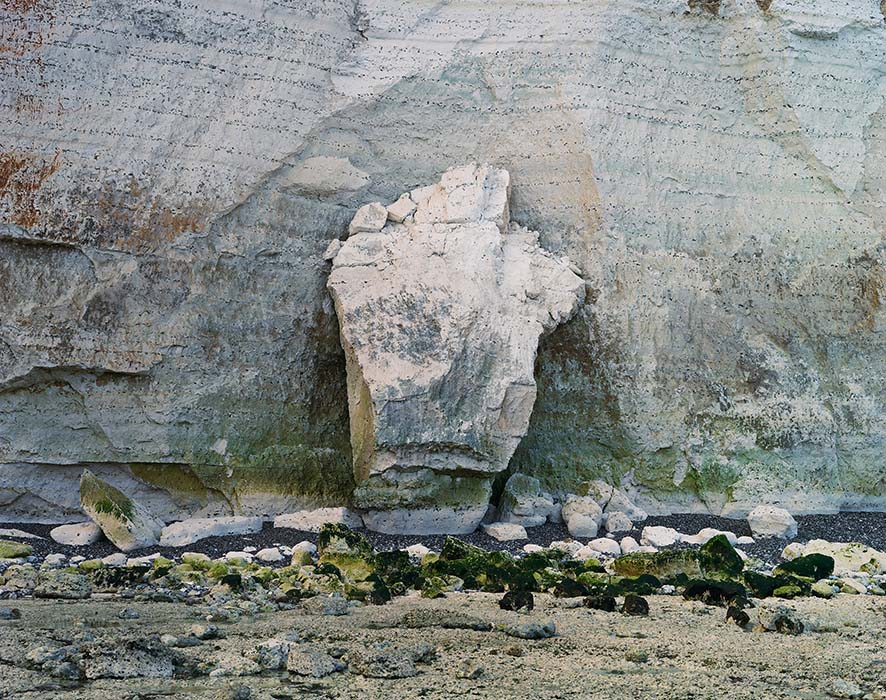Jem Southam’s photographs reflect on the manner in which transformations of the landscape relate to different scales of time. Beginning in the 1970s, Southam began documenting the landscape of the South West of England, patiently and thoughtfully recording changes at a single location over periods of months or years. His richly detailed works document subtle changes and transitions of the landscape, allowing Southam to reveal the subtlest of human or natural interventions. His work is characterised by its balance of poetry and lyricism within a documentary practice.
His series Rockfalls depicts particular sites along the English and French coasts, which he repeatedly visited over an extended period of time. The photographs in this series depict the cliffs and rock formations where they meet the Channel, both along the South-West coast of England in Devon and Dorset and in the Northern coast of France in Normandy.
Southam is fascinated with the sculptural manifestation of the forces at play in the slow processes of erosion, and the gradual pull of gravity. The series reveal the monolithic and formidable cliff faces the mark the borders between countries to be complex, unstable and fragile structures that subtly shift and alter with time. Southam’s photographs reveals the rock faces to be subject to the forces of both entropy and gravity
By returning to the same landslip and rockfall sites over an extended period of time, Southam’s patient observation of the landscape is revealed, as well as his underlying drive to understand the landscape. In his repeated visits, Southam creates visual representations of time, both ecological and historical. The photographer reveals traces of the past that influence and mark depictions of the landscape in the present. By presenting landscape as a continually and ever-evolving phenomenon, his pictures therefore also consider the descriptive capacity of the medium of photography itself.
Southam’s contemplative works extend beyond notions of ‘The Sublime’ in the natural landscape to examine the traces of cultural, political and social references that haunt them. By photographing the English coast and its geological counterpart in France, the photographs seek to address the geopolitics, histories and systems of knowledge that we impose upon the natural landscape. The landmasses of England and France separated 14,000 years ago – a relatively recent event in the Earth’s long history – and Southam’s photographs highlight the shared geological characteristics that lie either side of the Channel. By including both the French and British coastlines in ones series, Southam reveals the political and cultural impositions that land borders represent. This is perhaps more significant than ever now, due to the UK’s changing position within Europe.
The series demonstrates the poignancy of the photographic medium’s ability to record prescient narratives through a depiction of the superficial similarities between two distinct geographies while simultaneously revealing the construction of a politically charged system upon spaces and landscapes.
(By Thea Gregory)
